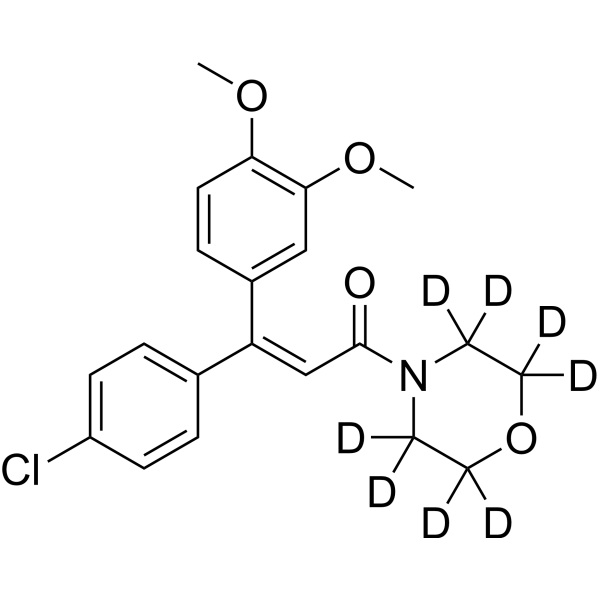Dimethomorph-d8
Modify Date: 2024-01-07 14:28:40

Dimethomorph-d8 structure
|
Common Name | Dimethomorph-d8 | ||
|---|---|---|---|---|
| CAS Number | 1346606-71-0 | Molecular Weight | 395.91 | |
| Density | N/A | Boiling Point | N/A | |
| Molecular Formula | C21H14D8ClNO4 | Melting Point | N/A | |
| MSDS | N/A | Flash Point | N/A | |
Use of Dimethomorph-d8Dimethomorph-d8 is the deuterium labeled Dimethomorph[1]. Dimethomorph is a fungicide belongs to the fungicide group of sterol biosynthesis inhibitor. Dimethomorph can inhibit fungal cell wall formation. Dimethomorph also inhibits androgen receptor (AR) activity in MDA-kb2 cells with an IC20 of 0.263 μM[2][3][4]. |
| Name | Dimethomorph-d8 |
|---|
| Description | Dimethomorph-d8 is the deuterium labeled Dimethomorph[1]. Dimethomorph is a fungicide belongs to the fungicide group of sterol biosynthesis inhibitor. Dimethomorph can inhibit fungal cell wall formation. Dimethomorph also inhibits androgen receptor (AR) activity in MDA-kb2 cells with an IC20 of 0.263 μM[2][3][4]. |
|---|---|
| Related Catalog | |
| In Vitro | Stable heavy isotopes of hydrogen, carbon, and other elements have been incorporated into drug molecules, largely as tracers for quantitation during the drug development process. Deuteration has gained attention because of its potential to affect the pharmacokinetic and metabolic profiles of drugs[1]. |
| References |
| Molecular Formula | C21H14D8ClNO4 |
|---|---|
| Molecular Weight | 395.91 |